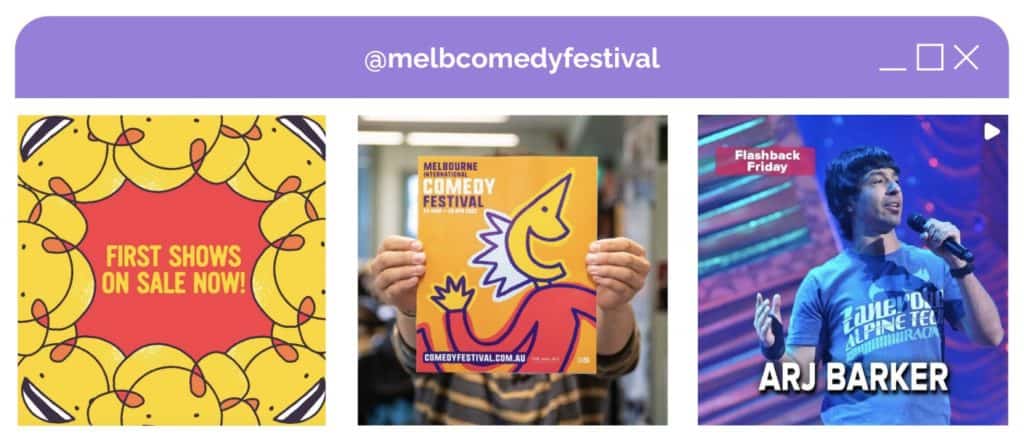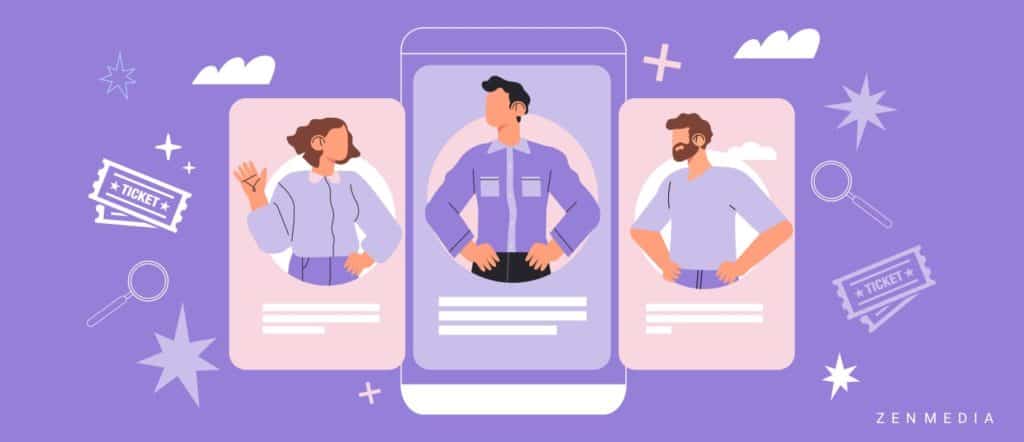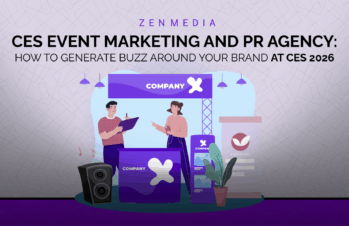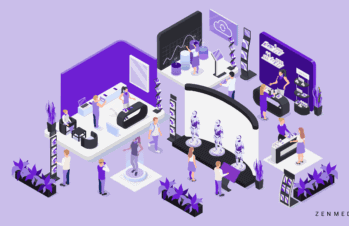So you’re hosting a conference. You’ve lined up the speakers, scheduled the food trucks, and reserved the hotel block. The agenda is set, with the time and place laid out for your keynote sessions, panels, networking events, and of course, happy hours.
Now all you’ve got to do is… convince people to attend. Have you come up with a marketing plan for a conference?
Conferences, even smaller one-day ones, are major undertakings, and the stakes are high. Not only does hosting a conference require a good deal of financial investment, but your speakers expect an interested, attentive audience. What’s more, conference attendees are almost certain to post on their own social feeds about your event, and they’ll post the good, the bad, and the ugly.
So yes—it’s pretty crucial that you have all your conference marketing ducks in a row. Our B2B event marketing agency has prepared the ultimate guide to creating a marketing plan for your conference so that not only your attendees but your speakers are eager to come back next year!
How To Market a Conference
1. Nail down your audience.
Just as you need to establish buyer personas to help hone your outreach to customers, you need to establish audience personas to help reach out to potential attendees.
If you’re hosting an industry conference, for example, who specifically do you want to attract? Marketing execs? Customer service teams? CEOs? Thought leaders?
Unless your conference is very tightly focused on a single niche, you’ll likely have several different audience personas. And you’ll need a conference marketing strategy.
Outline each group, focusing on the commonalities of a particular segment. You want these to evoke the general attributes that people in that particular group share, rather than highly specific characteristics that may only apply to a small number.
Here’s a sample buyer persona template from Hubspot that could easily be used to create an audience persona:
Source: Hubspot
Those audience personas will help guide you through the rest of your conference marketing strategy, allowing you to create the right messages using the right platforms to attract attendees to your website and, ultimately, your registration link.
2. Don’t forget about marketing to your existing customers.
While you’re busy coming up with audience personas, don’t forget about the customers you already have.
Marketing to them first is a must—after all, they’ve already shown interest in your brand and what you have to offer by either making a purchase or signing up for your email list.
Mining your existing email list for opportunities is a great way to jumpstart your conference registration, helping you make a strong showing as soon as your registration opens.
What’s more, marketing your conference to existing customers also gives you the chance to show your appreciation for them with a discount or early access, which can strengthen their commitment to your brand and make that ongoing relationship stronger.
Here are a few marketing tactics to effectively market your event to your existing customers:
- Offer an early-bird discount on registration
- Give them early access to the conference block of hotel reservations
- Include an advertising blurb about your conference in every customer email leading up to the event date—newsletters, thank you emails, reminder emails, etc.
- Offer a registration discount to customers who make a large purchase within a specific time frame
- Offer exclusive VIP access to long-time clients on a case-by-case basis
- Create a giveaway on social media asking people to sign up for your email list in exchange for a chance to win VIP access or free registration
3. Go all in with your social media promotions.
According to Eventbrite, more than 25 percent of all traffic to event registration forms comes from social media.
So that means you’ve got to create a solid social media marketing strategy to get your event in front of as many users as possible. Your conference marketing strategy should start as early as possible before the conference, all the way through until it’s over.
Your conference marketing strategy should include:
A conference social handle.
Instagram and Twitter are among the most popular social platforms for events, so be sure to set up handles on each.
Use more generic handles, if possible, that aren’t tied to a specific year or location—that way, you can use those same profiles next year to build buzz.
You can share any content relevant to your event—registration links, confirmed speakers, attendees, quotes from registrants or past participants, photos from past events or of your setup, industry articles, blog posts or publications by your speakers, even memes or silly gifs if that’s what resonates with your audience.
And since Twitter and Facebook are not as image reliant as Instagram, they may seem like the most natural fit for promoting a conference in advance. However, there are still plenty of ways to use Instagram in your conference marketing.
Related reading: How to Hack the Instagram Algorithm
Here’s one great idea from the Melbourne Comedy Festival:

Source: @melbcomedyfestival
If you’re at a loss for images to post, you can share photos from speakers’ past events (with their permission, of course), images of influencers who’ve confirmed attendance, images of the venue or city where your event will be, even short videos of your staff talking up the conference or walking viewers through some of their prep.
A conference hashtag.
Hashtags are a must-have for conference marketing these days, especially since attendee social engagement remains high.
According to data from Google, 66 percent of attendees engage in online activities during events, while 34 percent say they would specifically post about an event while attending.
Make your hashtag simple and easy to remember, and be sure to look out for other unofficial hashtags that are catching on among your followers.
If your #IndustryConference hashtag is also being accompanied by #industryconf2020, just include both in every post (that’s right—every single post!).
Related reading: How To Hashtag Like A Pro
Social ads.
Organic reach on social media is either dead or dying, depending on whom you talk to.
Either way, you’ll have to include social ad spend in your event budget.
When creating conference advertising, strive to make them feel as little like advertisements as possible—connected consumers are wired to filter out anything that feels like a paid promotion. If they feel like your paid ads are trying too hard to sell them something, consumers will scroll right past it without a second thought if it’s not compelling.
Instead, go for a storytelling approach. This infographic from OneSpot gives some great stats on how effective storytelling can be, as opposed to more promotional language.
Source: OneSpot
Use images in every ad if you can, as content with relevant imagery gets 94 percent more total views than content without it.
Once you nail down your social media strategy, you will need to create a registration form for people to fill out and submit. Your registration form is an essential part of the process. For webinar registration page tips, check out this article from GlueUp.
4. Leverage sponsors and speakers to increase your conference’s online reach.
If you’re working with sponsors, make sure you tag them and thank them publicly (on social media) when you post.
The same is true of any speakers or B2B influencers who will be participating in your conference.
Make sure you’re sharing your hashtags with them and tagging them frequently so they can also post about the event on their own social channels.
Promoting the event they’ll be speaking at is important for their own brand, too, so don’t be shy about asking them—tactfully, of course—to share the information with their audiences.
5. Remember to keep up your online promotion while your conference is going and after it ends!
Conference marketing shouldn’t end once registration closes. Even if your event is completely sold out, you want to continue to build buzz before, during, and afterward.
This will help with promotion for next year, as buzzworthy events generate word-of-mouth promotion, and that kind of marketing is priceless.
During your event, designate one person (or a team, depending on the size of your event) to post live from panel sessions and keynotes. You can also post photos of attendees, crowd shots, sound bytes from your presenters, or short videos—the possibilities are endless!
Related reading: How To Successfully Promote Pre- and Post-Event
What’s great about having these assets is that you can use them again to promote the following year’s event. Those photos and videos will become reminders of how exciting last year’s event was and show people who missed out on why they should register this time around!
Taking time to craft your conference marketing strategy is a high-stakes game that requires plenty of planning as well as critical and on-the-spot thinking. But if you do it right, you’ll reap the rewards for years—and events—to come.




